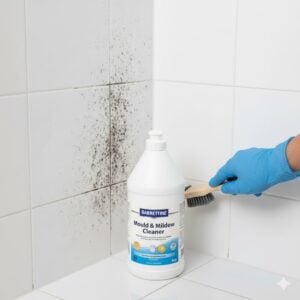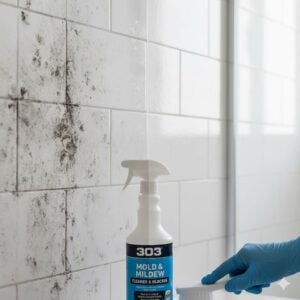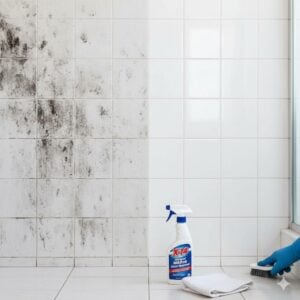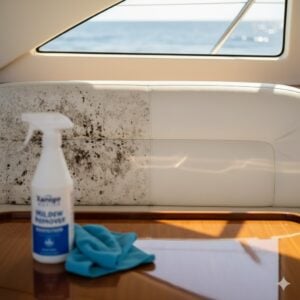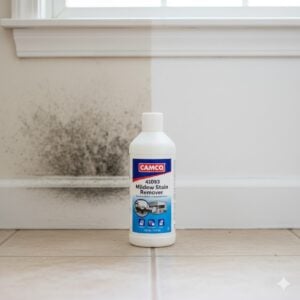Mould toxicity is a serious issue that many people in the UAE overlook until health symptoms appear. Living in a hot and humid environment makes homes and workplaces more vulnerable to mould growth, especially in areas with poor ventilation or water damage. When mould produces toxins, exposure can lead to what’s known as mould toxicity, a condition that affects both physical and mental health. Recognizing the symptoms early, knowing what first aid steps to take, and understanding prevention methods are essential to protect yourself and your family. In this article, we will explore mould toxicity symptoms in detail, explain what to do if you suspect exposure, and share preventive actions that reduce the risk of mould returning.
Table of Contents
ToggleWhat Is Mould Toxicity?
Mould toxicity occurs when a person is exposed to mould spores that release harmful substances called mycotoxins. These toxins are invisible, yet they can travel through the air and spread throughout indoor spaces. When inhaled, ingested, or even absorbed through the skin, mycotoxins can trigger health problems ranging from mild allergic reactions to serious chronic conditions. While some people may only experience nasal congestion or skin irritation, others—especially children, the elderly, or those with weakened immune systems—may face more severe complications. Understanding mould toxicity starts with recognizing the signs your body gives you.
Common Symptoms of Mould Toxicity
The symptoms of mould toxicity can vary widely from person to person. They may also resemble other conditions, which is why mould exposure is often overlooked. Still, some common signs are worth paying attention to:
Respiratory Symptoms: These include chronic coughing, wheezing, nasal congestion, sinus infections, sore throat, and shortness of breath. Mould spores irritate the airways, especially in people with asthma.
Skin Problems: Rashes, itching, redness, or dry patches may appear after contact with mould-contaminated surfaces.
Eye Irritation: Watery eyes, itching, redness, and sensitivity to light are frequent when exposed to mould spores indoors.
Neurological Symptoms: Some people experience headaches, brain fog, poor memory, dizziness, or difficulty concentrating.
Fatigue and Weakness: Constant tiredness, even after adequate rest, is a sign of prolonged mould exposure.
Digestive Issues: Nausea, diarrhea, and abdominal discomfort may occur if mould toxins enter the digestive system.
Worsening Allergies: People who already suffer from seasonal allergies often report intensified symptoms when mould is present.
Not everyone will experience all these symptoms, but if multiple signs occur together and persist, it is worth considering mould toxicity as a possible cause.
First Aid for Mould Toxicity
If you or a family member experience symptoms that may be linked to mould toxicity, taking immediate first aid steps can reduce the impact before professional help is available. These steps are not a substitute for medical treatment but can make a difference in the short term.
Step 1: Remove Exposure. Leave the area suspected of mould contamination immediately. If it’s your home, stay in a well-ventilated room or outside until the affected space can be addressed.
Step 2: Clean the Body. Wash your hands, face, and any exposed skin with soap and water to remove spores. If your clothes were exposed, change into clean ones and wash the contaminated garments separately.
Step 3: Support Breathing. For those experiencing respiratory irritation, inhaling steam from a bowl of hot water may temporarily soothe the airways. Avoid strong inhalers or sprays without medical advice.
Step 4: Stay Hydrated. Drinking water helps flush toxins from the body and reduces the dryness caused by mould exposure.
Step 5: Relieve Symptoms. Over-the-counter antihistamines may help with itching, watery eyes, or nasal congestion. However, they are only temporary relief and not a cure for mould toxicity.
Step 6: Seek Medical Help. If symptoms are severe—such as difficulty breathing, chest pain, or persistent dizziness—seek emergency medical care immediately. Doctors can provide treatments such as corticosteroids, antifungal medication, or supportive therapies.
Prevention of Mould Toxicity
While first aid helps in emergencies, prevention is the most important way to protect yourself from mould toxicity. In the UAE, where high humidity and temperature changes encourage mould growth, proactive steps make all the difference.
1. Control Moisture
Mould thrives in damp environments, so reducing moisture is the first step in prevention. Fix leaks in roofs, pipes, or bathrooms as soon as possible. Use exhaust fans when cooking or showering, and ensure your home is properly ventilated. In areas prone to dampness, such as basements or bathrooms, consider using dehumidifiers.
2. Improve Ventilation
Fresh air circulation reduces mould growth. Open windows when possible, and maintain airflow with ceiling fans or HVAC systems. Cleaning and servicing your air conditioner regularly also prevents mould buildup inside ducts.
3. Regular Cleaning
Cleaning regularly with eco-friendly solutions like vinegar or baking soda prevents mould from settling on surfaces. Pay special attention to kitchens, bathrooms, and storage areas where humidity is higher. If you notice any small spots of mould, clean them immediately before they spread.
4. Use Anti-Mould Products
Anti-mould paints and sealants add extra protection in vulnerable areas such as bathrooms and kitchens. They prevent moisture from penetrating walls and ceilings, reducing the chance of hidden mould growth.
5. Monitor Humidity Levels
Keeping indoor humidity below 60% is critical. Hygrometers are inexpensive tools that allow you to track humidity in real time. If levels are too high, adjust with air conditioning or dehumidifiers.
6. Address Water Damage Quickly
After heavy rain or flooding, water damage must be cleaned and dried within 24–48 hours. Any delay gives mould the perfect opportunity to grow and spread. If large-scale damage occurs, professional help is essential.
When to Call Professionals
While small mould spots can often be cleaned at home, mould toxicity symptoms are a clear sign that professional intervention may be necessary. If your health is being affected, if you see mould patches larger than one square meter, or if the smell of mould is strong throughout your home, experts should be contacted. Professionals not only remove the visible mould but also address hidden colonies and moisture problems to stop the cycle of regrowth. In the UAE, professional mould remediation services provide inspections, removal, and preventive treatments that ensure long-term protection.
The Role of Bio-On Cleaning Services
At Bio-On Cleaning Services, we specialize in safe and thorough mould remediation. Our team is municipality-authorized and trained to handle high-risk cleaning tasks, including black mould removal. We keep our prices affordable compared to many providers, but every job is still verified by our experts before work begins, ensuring accuracy and transparency. Our methods include eco-friendly cleaning, air quality testing, and advanced techniques to not only remove mould but also prevent it from returning. Whether you are in Dubai, Abu Dhabi, Sharjah, or any other Emirate, we respond quickly to protect your home and your health.
Living Safely After Mould Removal
After mould has been removed, living habits matter to prevent recurrence. Simple steps like wiping bathroom tiles dry after showers, keeping wardrobes ventilated, and avoiding clutter in damp areas reduce mould risks. For those with a history of mould toxicity symptoms, monitoring air quality at home provides extra peace of mind. Our team at Bio-On also provides advice on prevention as part of our service, helping you maintain a mould-free environment long after the job is complete.
Conclusion
Mould toxicity symptoms can range from mild irritation to serious health problems, but they should never be ignored. First aid steps such as leaving the contaminated area, washing exposed skin, and relieving symptoms with hydration or antihistamines can help in emergencies, but they are not long-term solutions. Prevention through proper ventilation, moisture control, and regular cleaning is the best defense against mould. When symptoms are strong or mould is widespread, professional removal is the safest option. At Bio-On Cleaning Services, we provide affordable, expert-verified solutions that restore safety to your home. If you suspect mould toxicity in your property, don’t wait—click the contact button on the right middle of this article, and let our team help you create a healthy, mould-free environment.








